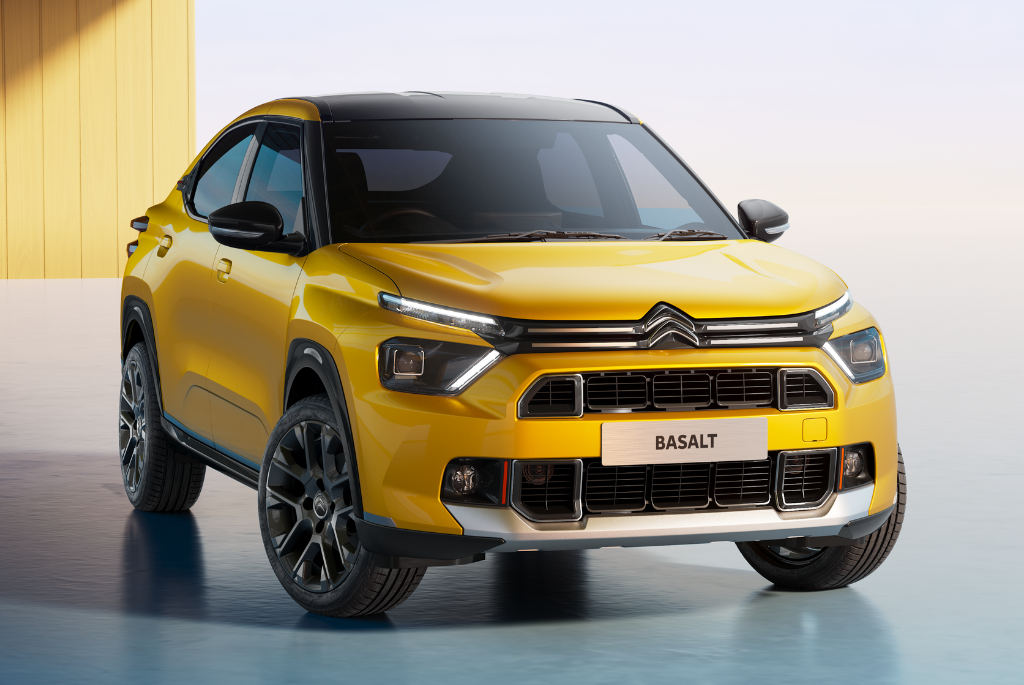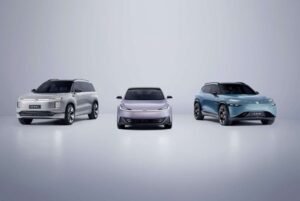
Citroen has unveiled the Basalt Concept coupe-SUV, signaling its imminent arrival as a production model. Designed for the Indian and South American markets, the Citroen Basalt will be manufactured locally and is the fourth vehicle based on the brand’s C-Cubed architecture.
Scheduled for launch in India in the second half of 2024, it will compete with the upcoming Tata Curvv upon its debut. While comprehensive details are not yet available, here’s what we know so far.
Citroen Basalt: Styling, Interiors, and Features
The Basalt is unmistakably a Citroen, especially from the front, where it shares styling cues with its siblings. Its front fascia closely resembles that of the Citroen C3, featuring a two-part grille, a silver skid plate, and LED DRLs and headlights.
On the side profile, it rides on gun-metal finish alloys, although these may not make it to the production version. The sloping roofline is accentuated by blacked-out extensions on the C-pillar, while the heavy cladding typically seen on the C3 is absent.
At the rear, the Citroen Basalt boasts wrap-around LED tail lights, an integrated spoiler, and a similar silver faux skid plate as seen at the front.
Although Citroen has not yet revealed the interior, we anticipate the Basalt to inherit features from the C3, such as automatic climate control, cruise control, wireless charging, keyless entry, and electrically foldable ORVMs.
Citroen Basalt: Engine
Details on the Basalt’s powertrain are still limited, but we anticipate it to be equipped with the same 1.2-litre turbo-petrol engine found in the C3. This engine produces 108 bhp and 190 Nm of peak torque and can be mated to either a five-speed manual or a six-speed automatic gearbox.
Citroen Basalt: Price
As a more stylish, coupe-SUV variant of the C3, the Basalt is likely to command a premium over its counterpart. It’s expected to be priced in the range of ₹15-20 lakh.


